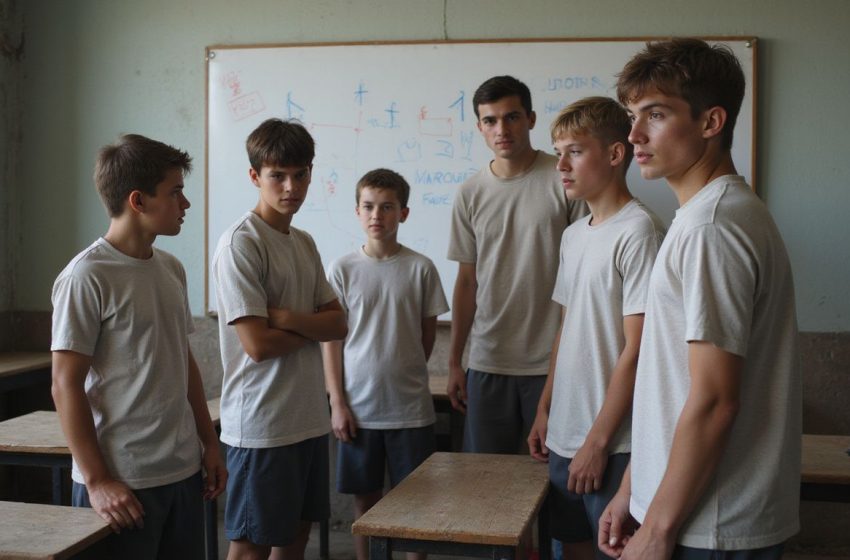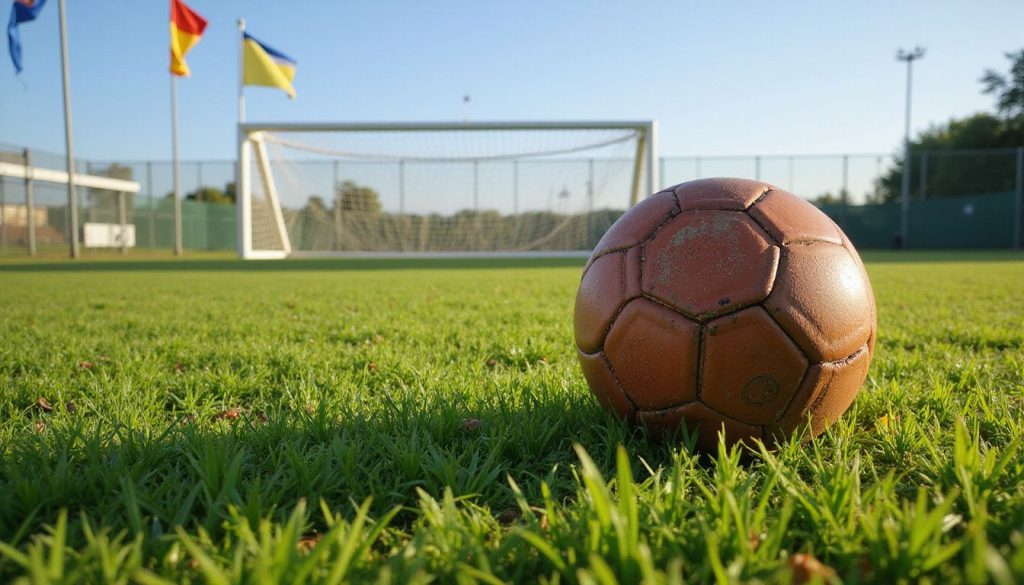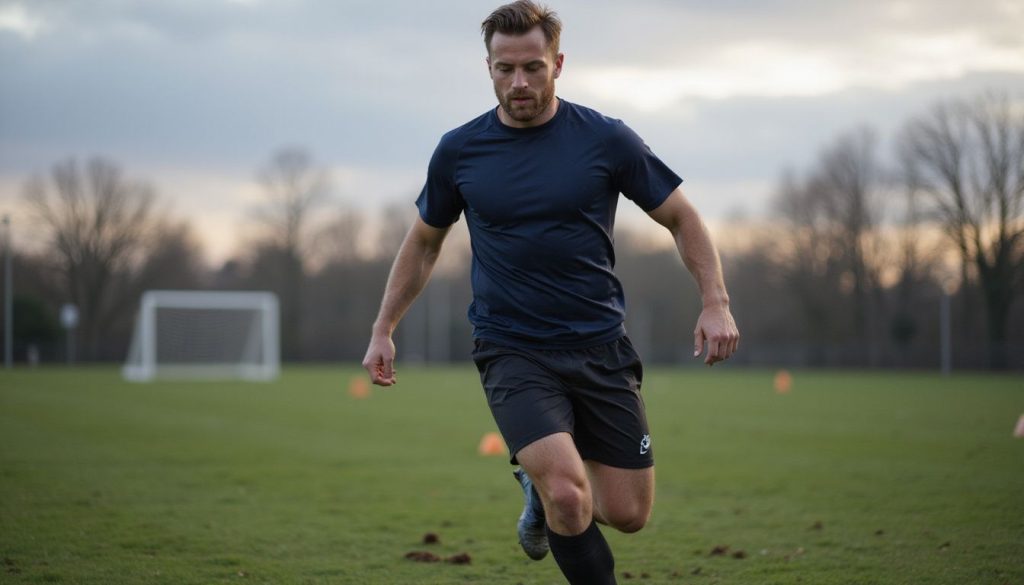A Beginner’s Guide to Soccer Tactics and Formations: Understanding Strategies for New Players

New soccer players often feel lost watching games because they don’t understand the tactics and formations teams use. Professional soccer teams spend countless hours in coaching sessions perfecting their strategies and player positions.
This beginner’s guide to soccer tactics and formations will break down the most common setups and explain how defenders, central midfielders, and attacking players work together to win games.
You’ll finally understand what’s happening on the soccer field.
The Importance of Soccer Tactics and Formations

Soccer tactics and formations serve as the backbone of every successful team. These strategic blueprints help players understand their roles on the field. Football tactics create structure during matches and guide decision-making under pressure.
Teams that master these concepts gain a clear advantage over opponents who rely only on individual skill. Formations determine where players position themselves, while tactics dictate how they move and interact.
Centre-backs know exactly where to stand, and attacking midfielders understand their movement patterns. This organized approach transforms eleven individual players into a cohesive unit.
Coaches use formations to maximize their team’s strengths and exploit opponent weaknesses. A solid tactical foundation allows teams to control games through smart positioning and coordinated movements.
Players develop better field awareness when they grasp these soccer basics. Central-midfield players become more effective when they understand their tactical responsibilities. Defensive midfielders can anticipate threats, while centre-forwards create better scoring opportunities.
Teams with strong tactical discipline rarely get caught out of position, making them harder to break down and more dangerous in attack.
Common Soccer Formations
Soccer formations shape how teams position players on the field during matches. These tactical setups help coaches organize their squads to create scoring chances while stopping opponents from finding the goal line.
4-4-2: The Classic Setup
The 4-4-2 formation stands as one of the most popular setups in football tactics. This classic system uses four defenders, four midfielders, and two forwards. Teams around the world have used this formation for decades because it offers balance between attack and defense.
The setup gives coaches a simple structure that new players can learn quickly during coaching sessions.
Each position has clear duties in the 4-4-2 system. The two central defenders protect the goal line and work closely with goalkeepers. Wide midfielders cover the flanks and support both defense and attack.
The front line consists of two strikers who create scoring chances. This formation works well because players understand their roles without complex instructions. Many soccer basics start with learning this setup since it teaches fundamental positioning and teamwork.
The 4-4-2 formation is like a good foundation for a house. It’s simple, strong, and everything else can be built on top of it. – Youth Soccer Coach
4-3-3: Attacking Versatility
The 4-3-3 formation puts three forwards up front and creates many chances to score. This setup gives teams great attacking power because players can move around and switch positions easily.
Two wingers stretch the field wide while one striker stays in the center. This spread makes it hard for the other team’s defence to cover all areas.
Football tactics work best with this formation because it offers balance between attack and defense. Three midfielders control the center of the field and help both ends of the pitch.
Coaches love this system because it lets fast players run at defenders and create space. High pressing becomes easier since forwards can quickly close down opponents. Teams can also switch to counter-attacks when they win the ball back.
Now let’s look at how the 3-5-2 formation focuses more on defensive strength.
3-5-2: Defensive Strength with Midfield Control
The 3-5-2 formation gives teams solid defense while keeping control in midfield. Three center-backs form a strong wall that makes it hard for attackers to break through. Five midfielders spread across the field to win balls and create plays.
This setup works well when teams face strong attacking opponents.
Two wing-backs run up and down the sides to help both defense and attack. They must have great stamina since they cover lots of ground during matches. The three central midfielders can press high or sit deep based on what the game needs.
Many coaches use this formation when they want to keep possession and build attacks slowly. Soccer basics show that this system gives teams balance between staying safe at the back and creating chances up front.
Next, we’ll look at how the 4-2-3-1 formation balances defense and offense.
4-2-3-1: Balancing Defense and Offense
Moving from the defensive strength of 3-5-2, the 4-2-3-1 formation offers teams a more balanced approach to football tactics. This setup uses four defenders, two defensive midfielders, three attacking midfielders, and one striker.
Many top coaches prefer this formation because it provides solid defensive cover while creating multiple attacking options.
Two defensive midfielders sit in front of the back four to break up opponent attacks and start counter-attacks. Three attacking midfielders work behind the lone striker to create chances and support the attack.
During my coaching sessions with youth teams, I’ve seen how this formation helps new players understand both defensive duties and attacking movement. The wide attacking midfielders can track back to help defend, while the central attacking midfielder acts like a playmaker to link defense and attack.
Key Soccer Tactics for Beginners
Soccer basics become clearer when you learn key tactics that shape how teams play. These football tactics help new players understand the game better and make smarter decisions on the field.
Pressing and Counter-Pressing
High pressing means players move forward quickly to win the ball back from opponents. Teams apply pressure on the other side right after losing possession. This football tactic works best when all players move together as one unit.
Players must stay close to each other and cut off passing lanes. The goal is to force mistakes and create scoring chances near the opponent’s goal.
Counter-pressing happens right after your team loses the ball. Players immediately chase the opponent who just won possession. This tactic stops the other team from starting their attack.
Smart teams use counter-pressing to win the ball back within six seconds. Coaches teach players to press the nearest opponent first, then help teammates nearby. This strategy turns defense into attack very quickly and keeps control of the game.
The High Defensive Line
Pressing tactics work best with another key strategy. The high defensive line pushes your team’s defenders far up the field. This soccer basics approach keeps your backline close to the halfway line instead of sitting deep near your goal.
Teams use this formation to squeeze the playing space. Your defenders stay high while your midfielders press forward. This creates a compact shape that makes it hard for opponents to find room.
The strategy also catches attacking players offside more often. Players must stay alert and move together as one unit. If one defender drops back too early, it creates gaps that smart forwards will exploit.
High pressing works perfectly with this defensive setup since both tactics focus on winning the ball quickly in advanced positions.
Compactness in Defense
While a high defensive line pushes players forward, compactness in defense brings your team closer together. This soccer basics principle means keeping short distances between your defenders, midfielders, and forwards.
Your team forms a tight unit that moves as one block across the field.
Compact defending makes it hard for opponents to find space between your players. The strategy forces attacking teams to play around your defensive shape instead of through it. During coaching sessions, teams practice moving together to maintain these short distances.
This football tactics approach helps prevent dangerous through balls and limits scoring chances for the other team.
The Role of the Deep-Lying Playmaker
Defense tactics work hand in hand with creative midfield play. A deep-lying playmaker sits behind the main midfield line. This player controls the game’s tempo from a deeper position.
They pick out passes that break through opponent lines.
Deep-lying playmakers need excellent vision and passing skills. They spot teammates making runs into space. These players often receive the ball from defenders and start attacks. Johan Cruyff used this role to great effect during his playing days.
The position requires patience and smart decision-making. Players in this role must read the game well. They create chances for forwards while staying disciplined defensively. Soccer basics include learning how this player connects defense to attack through precise passing.
Tips for Adapting to Different Strategies
Soccer tactics change during every match. Players must adjust their game plan quickly to stay competitive.
- Watch the opposing team’s formation before kickoff – Study how they line up during warm-ups and coaching sessions to predict their strategy early.
- Switch your pressing intensity based on the score – Use high pressing when trailing by a goal, but drop back into a compact shape when protecting a lead.
- Communicate position changes loudly with teammates – Call out when you move from your assigned spot so others can cover the space you leave behind.
- Practice multiple formations during training – Master at least three different setups so you can adapt when your coach makes tactical changes during matches.
- Read the referee’s card tendencies early – Notice if they show yellow cards quickly for small fouls, then adjust your tackling approach to avoid getting sent off.
- Adjust your runs based on defensive lines – Make deeper runs against high defensive lines, but stay closer to midfield when opponents sit back in their own half.
- Change your passing tempo to match game situations – Play quick passes during counter-attacks, but slow down possession when your team needs to control the match rhythm.
- Study video footage of different tactical approaches – Watch professional matches to see how teams adapt their strategies during important moments like stoppage time.
Conclusion
Learning football tactics and formations gives new players a strong foundation for success on the field. These soccer basics help you understand how teams work together and create winning strategies.
High pressing, defensive compactness, and smart positioning become second nature when you practice these concepts during coaching sessions. Can you picture yourself reading the game better and making smarter decisions with the ball? These tactical skills will transform your performance and boost your confidence on the pitch.
Keep studying different playbooks and watch how top teams like those in the World Cup use these formations. Your journey from beginner to tactical expert starts with taking these simple strategies to your next practice session.





